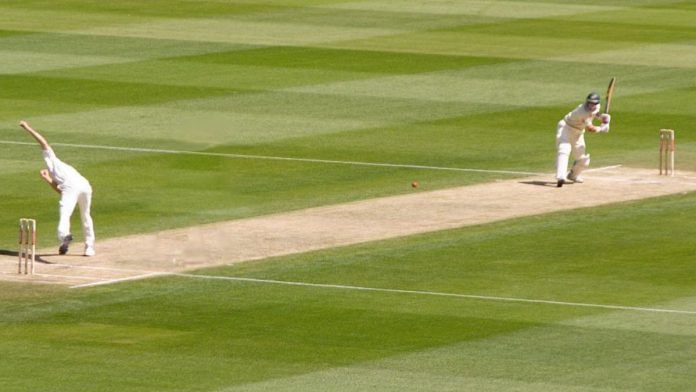Thank you dear subscribers, we are overwhelmed with your response.
Your Turn is a unique section from ThePrint featuring points of view from its subscribers. If you are a subscriber, have a point of view, please send it to us. If not, do subscribe here: https://theprint.in/subscribe/
Team India’s brilliant run at the 2023 World Cup finally came to a tragic end as Australia became world champions for the sixth time at the expense of the crestfallen hosts. On a day where it mattered the most, the Men in Blue somehow got stuck in a mesh and could barely break free despite rare glimpses of their brilliant 10 match winning streak up to the final obstacle. India’s wait for an ICC title win extended to 10 years after they were beaten by Australia in the final of the World Cup 2023 by six wickets.
India’s defeat to Australia in the ICC One Day Cricket World Cup final has prompted a deep reflection on the state of Indian cricket and its performance on the global stage especially its failure to win ICC trophies. While the loss may be dissected from various angles, one cannot overlook the profound influence of the Indian Premier League (IPL) in reshaping the dynamics of the game and blurring traditional advantages.
In the realm of cricket, India has long been renowned for its spin-friendly pitches, posing a formidable challenge to visiting teams. However, the landscape of the game is rapidly evolving, and a significant catalyst for this transformation is the IPL which has revolutionized cricket with its glitz, glamour, and high-octane matches, it has inadvertently eroded the home advantage.
One of the striking repercussions of the IPL phenomenon is the influx of foreign players into Indian cricketing circles. These overseas cricketers, initially unfamiliar with the intricacies of Indian pitches, have now become seasoned veterans through their participation in the IPL. What was once a daunting challenge for them has transformed into a familiar terrain, nullifying the advantage that Indian spinners previously held.
The IPL’s format, with its frenetic pace and back-to-back matches on a variety of pitches across India, serves as a crash course for foreign players to acclimatize to the sub continental conditions. Over the years, they have honed their skills in reading spin, mastering the art of playing on turning tracks, and deciphering the nuances of Indian pitches. Consequently, when these players represent their national teams in ICC events on Indian soil, they are no longer daunted by the prospect of facing spinners in unfriendly conditions.
This shift in dynamics has profound implications for Indian cricket. Historically, the spin-heavy bowling attack has been the cornerstone of India’s success at home. However, with foreign players now adept at tackling spin, the home advantage has been considerably diluted. Indian spinners, accustomed to dominating on familiar turf, now find themselves facing a formidable challenge against opponents who are equally adept at playing spin.
George Bailey, the chairman of selectors of Cricket Australia famously replied to a question why they choose to bowl first in the finals ‘We have played IPL and bilateral series for a long time now, and in our experience the red soil disintegrates but the black soil gets better to bat on under lights’. Bailey had played for three different IPL franchises in his playing days and with all this experience from IPL and India becoming a central hub of world cricket, the overseas players are inarguably becoming adept at reading Indian pitches perfectly.
Furthermore, the IPL’s influence extends beyond on-field performances to strategic insights and psychological warfare. Foreign players, having spent significant time in the IPL ecosystem, possess intimate knowledge of Indian cricketing strategies, player tendencies, and tactical nuances. Armed with this understanding, Australia’s astute game plan in the World Cup final was a testament to their shrewd utilization of IPL-derived insights to outmaneuver their opponents.
While the IPL has undoubtedly elevated the standard of cricket and fostered global camaraderie, its unintended consequence of diluting India’s home advantage cannot be overlooked. As India grapples with the aftermath of its World Cup defeat, it must confront the reality of a transformed cricketing landscape, where traditional home advantages are no longer sacrosanct. Embracing this paradigm shift necessitates a reassessment of tactics, talent development strategies, and pitch preparations to thrive in a more level playing field sculpted by the IPL’s global influence.
While the loss to Australia in the World Cup Finals may sting, it serves as a wake-up call for Indian cricket to adapt and evolve in tandem with the evolving dynamics of the game. The BCCI’s decision to deny central contracts to Ishan Kishan and Shreyas Iyer for not playing in the ongoing Ranji Trophy(at that point in time), plans for equaling red-ball fee with IPL remuneration with an eye on raising the value for red ball cricketers and newly introduced ‘fast bowling contracts’ are all positive developments which will help India to reclaim its stature as a cricketing powerhouse capable of excelling in both white and red ball international formats.
These pieces are being published as they have been received – they have not been edited/fact-checked by ThePrint

